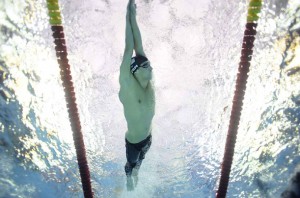Competitive Coach’s Corner – January 2012
THE IMPORTANCE OF WALLS AND STREAMLINES
It is easy to underestimate the importance of your walls and how they can influence your swimming times. One hundredth of a second can be the difference between getting a second swim in finals or winning the race. Many swimmers do not realize that by having their streamlines very tight, coupled with explosive kick outs, can give them that extra edge to finish the race hard and touch out the competition.
In the Silver group we are working to improve our walls and to get farther off each wall. The skills the swimmers and I have been working on include:
1. Having their top thumb wrapped around their bottom hand in their streamline to keep it tight, squeezing the back of the ears with their shoulders.
2. Giving that extra effort to whip their butterfly kick outs in fly, back, and free. Also to blend those butterfly kicks into flutter kicks while still in their streamline for freestyle and backstroke.
3. Keeping their head down for at least two strokes off the wall in freestyle and butterfly.
4. Keeping their tight streamline while getting a good glide on breaststroke pullouts.
These are all skills that can be tough to complete while in oxygen debt in the middle of a set in practice or at the end of a 200 freestyle in competition. While these are difficult to accomplish in those situations, they are very doable and will get much easier to complete correctly with discipline and hard work. Just like it can be hard for toddlers learning how to walk, or for an adolescent learning how to tie their shoes, practice and hard work will make you better!
In the last 20 years or so, there have been rule changes to the sport of swimming to make it so swimmers are only allowed to kick out in their streamline for 15 meters off each wall. The rule now states that if you break the surface after 15 meters in fly, back, or free, you will be disqualified.
In the late 1980’s, before the 15-meter rule, US Olympian David Berkoff took advantage of the explosiveness of his kick outs by underwater dolphin kicking past 15 meters. For his 100 meter backstroke, he would kick out for the first 40 meters on his first wall and 20 meters on his second wall. This was known as the “Berkoff Blastoff”. He set the world record in the 1988 Seoul Olympics doing this kick out. Primarily due to Berkoff, the 15-meter kick out rule was created in backstroke.
More recently in the 1990’s, Arizona local Olympic champion, Misty Hyman, exploited the fact that the rule only applied to backstroke. In her 100 meter fly, she would kick 40 meters off her first wall and would be one to two body lengths ahead of the competition when she surfaced. In the 2000 Sydney Olympics, she won gold, and the 15-meter rule was applied to butterfly and freestyle shortly after. This was done primarily to the fact that underwater dolphin kick outs gave so much of an advantage.
The message to all RIO swimmers: Use those streamline kick outs (up to 15 meters)!!!
– Coach Rich





